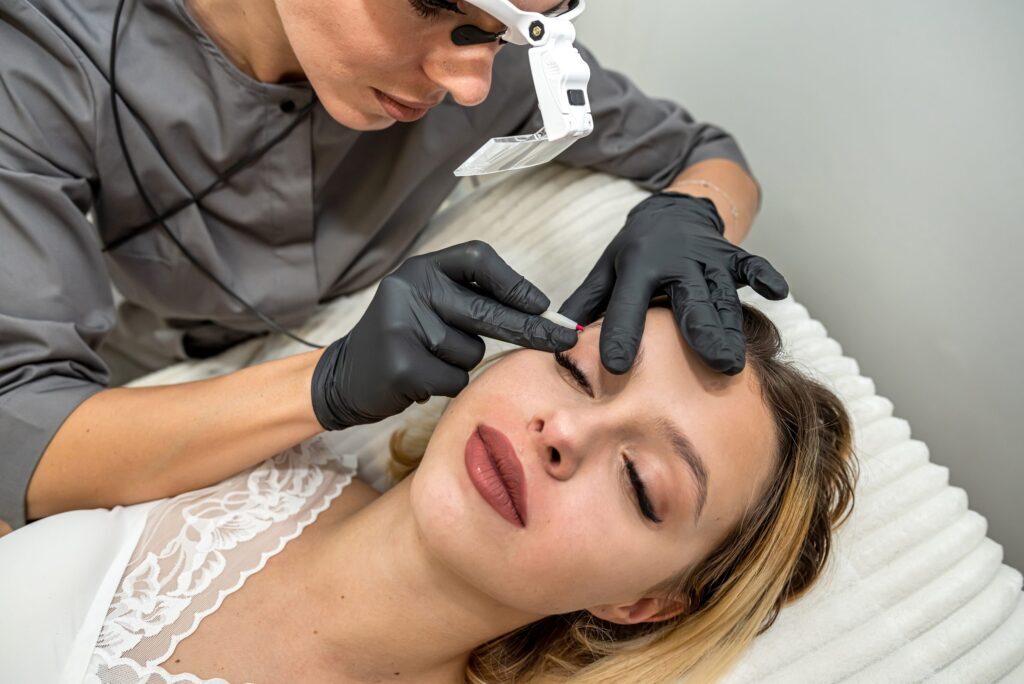Many people seeking permanent hair removal often wonder, “Will hair grow back after electrolysis?” When considering electrolysis hair removal in Riyadh, it’s essential to understand how the process works and whether results truly last forever. Electrolysis is recognized by the FDA as the only method of permanent hair removal, but a few factors can affect the outcome. Learning what influences regrowth and how to maintain results will help you make an informed decision before starting your treatment.
How Electrolysis Works:
Electrolysis targets the hair follicle directly using a fine probe and a controlled electric current.
- The current destroys the follicle’s growth center, preventing future hair production.
- Each hair is treated individually, making the method precise and effective.
- Once the follicle is properly destroyed, it cannot produce new hair again.
Is Electrolysis Really Permanent:
Electrolysis is the only scientifically proven method for permanent hair removal.
- It completely destroys the follicle’s ability to regenerate hair.
- Once the treatment series is complete, the results are long-lasting.
- However, multiple sessions are required because hair grows in cycles, and not all follicles are active at once.
Why Some Hair Might Grow Back:
In some cases, minimal regrowth can occur, but this doesn’t mean the treatment failed.
- Dormant follicles: New hairs may emerge from follicles that were inactive during earlier sessions.
- Hormonal fluctuations: Conditions such as PCOS, menopause, or thyroid imbalance can trigger new hair growth.
- Incomplete treatment: Missing sessions or treating only part of the follicle can allow hair to regrow.
Temporary Regrowth After Treatment:
Some regrowth right after treatment is normal and part of the process.
- Treated hairs may appear finer and lighter as follicles weaken.
- Hair may temporarily emerge before the follicle is fully disabled.
- Continued sessions ensure all follicles are permanently treated over time.
How Many Sessions Are Required:
Achieving complete and permanent results takes time and consistency.
- Small areas (upper lip, chin, eyebrows): 10–15 sessions.
- Medium areas (underarms, bikini line): 15–25 sessions.
- Large areas (legs, back, arms): 25–50+ sessions.
- Regular attendance ensures every follicle is treated during its active growth phase.
Factors Affecting Hair Regrowth:
Several internal and external factors influence whether hair regrows after electrolysis.
- Hormonal levels: Elevated androgens can stimulate new follicle growth.
- Medication use: Certain drugs can alter hair patterns or regrowth rates.
- Hair type: Coarse or dense hair may require more sessions for complete removal.
- Skin type and sensitivity: These may influence how the skin heals and reacts to treatment.
Maintaining Long-Term Results:
To maintain smooth, hair-free skin, proper follow-up and care are key.
- Attend all recommended sessions to ensure every follicle is destroyed.
- Avoid plucking or waxing between treatments, as this can disrupt the follicle.
- Follow aftercare instructions such as applying soothing creams and avoiding sun exposure.
Difference Between Regrowth and New Growth:
It’s important to distinguish between regrowth from treated follicles and new growth from previously inactive ones.
- Regrowth: Occurs when the follicle wasn’t fully destroyed or treated.
- New growth: Happens when new follicles become active due to hormonal or genetic factors.
- Consistent sessions address both, ensuring long-term effectiveness.
Choosing a Skilled Specialist:
Your results depend heavily on the experience and precision of your electrologist.
- Certified professionals ensure correct probe insertion depth and current intensity.
- Inexperienced practitioners may undertreat follicles, leading to partial regrowth.
- Always choose a licensed clinic with a proven track record in safe and effective procedures.
Comparing Electrolysis with Laser Hair Removal:
While laser hair removal provides long-term reduction, electrolysis ensures permanent results.
- Laser targets pigment and may not work on light or fine hair.
- Electrolysis works on all hair colors and skin types.
- Laser treatments may require maintenance, while electrolysis destroys follicles permanently when done correctly.
Final Thoughts:
Hair regrowth after electrolysis hair removal is minimal and often temporary, depending on factors like hormonal changes or incomplete sessions. Electrolysis permanently destroys the hair follicle, making it the most reliable method for lifelong smoothness. While patience and consistency are required to treat every follicle, following professional guidance, maintaining regular sessions, and choosing a skilled specialist ensure lasting, hair-free results. For those seeking a permanent solution, electrolysis remains the gold standard in effective and safe hair removal.

